The Pet Lover’s Guide to Dog Microchipping
Dog microchipping is a helpful safety precaution. It's like a permanent ID card for your dog - and can majorly increase your chances of finding them if they get lost. But here's why you should consider a microchip + GPS tracker for max safety.

If you are a pet parent, then you’ve probably heard something about microchips for dogs. Given how they help a vet or a local shelter identify your dog and contact you, it’s a smart safety precaution every pet parent should consider. (Plus, it’s also legally required in most countries.)
So in this post, we’ll cover everything you need to know about dog microchipping, including what it is and how it is done, how much it costs, if there are risks or pain associated with the procedure, as well as the benefits of microchipping your dog. Importantly, we’re also going to cover how a microchip for dogs differs from a GPS tracker – and why you need both to keep your buddy safe.
- What is a microchip for dogs & how does it work?
- Dog microchipping FAQs: How do vets microchip a dog?
- How long does it take to microchip a dog?
- How much does it cost to microchip a dog?
- Where can I get my dog microchipped?
- Where can I get my dog scanned for a microchip?
- Does microchipping hurt dogs? Is it safe?
- Should I microchip my dog?
- List of pet microchip companies
- Can a microchip be removed from a dog?
- Can I track my dog with a microchip?
- Can’t we just implant GPS trackers into dogs?
- Want max safety for your dog? Get a microchip + GPS tracker
What is a microchip for dogs & how does it work?
A microchip for dogs an implantable ID chip, about the size of a grain of rice, placed under the skin of a dog. It helps provide a form of permanent identification for your dog. This is important because, while ID collar tags are also necessary, they may fall off or become difficult to read.
So if your dog runs off and a helpful stranger finds them and brings them to a vet, animal hospital or shelter, they can use a microchip scanner to read the dog’s microchip ID number. Then, the vet or shelter staff can look up this number on the microchip database and identify you, the parent of the dog.
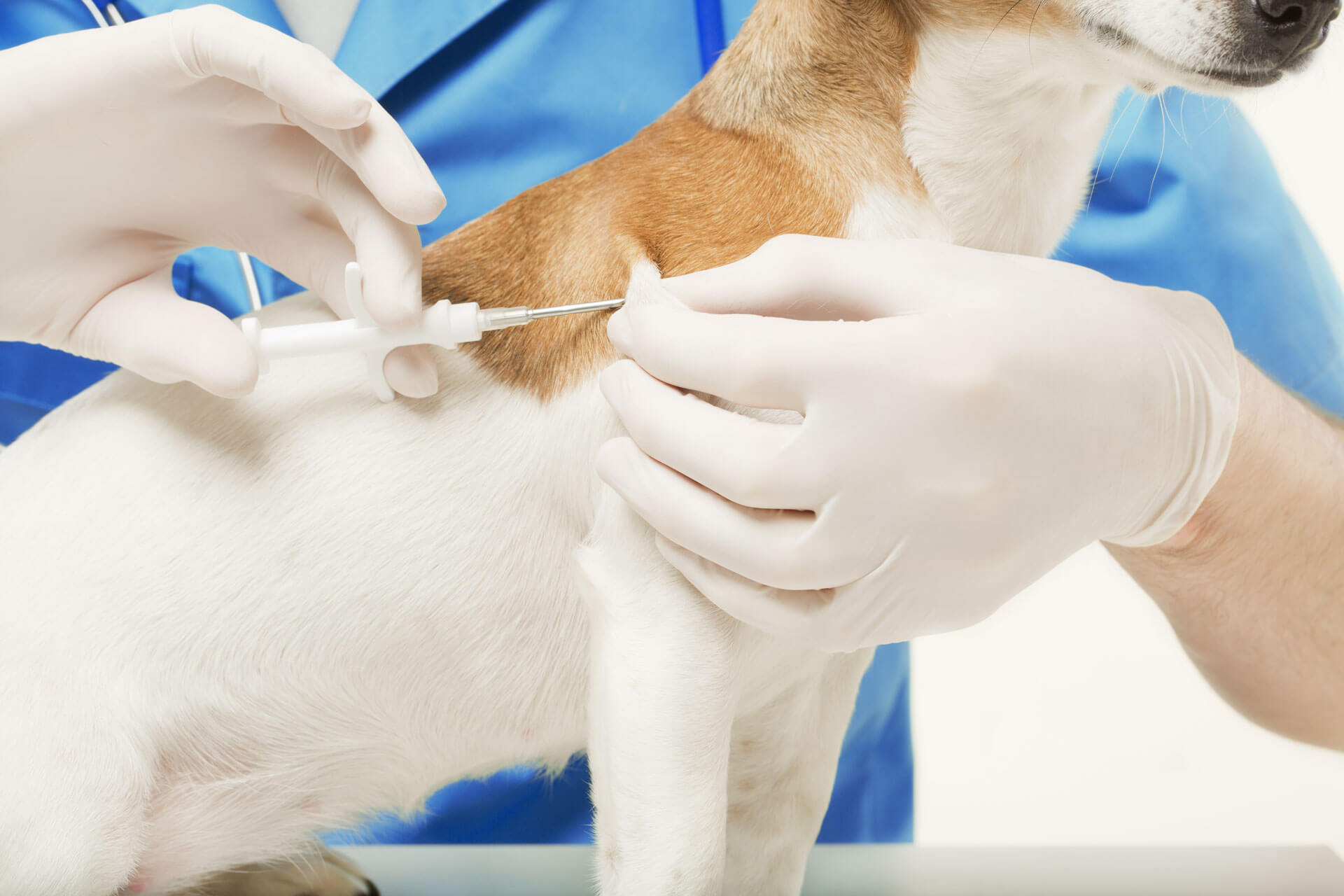
This is why you should keep your info and contact details in the microchip database up to date. Because soon after, you might just get a call from a vet or animal shelter informing you they’ve found your dog. Hallelujah!
This is why many vets, adoption agencies and pet shelters recommend getting your dog microchipped. Microchips are considered an invaluable tool for dog parents, as are microchips for cats.
In fact, according to a 2017 survey by the British Veterinary Association, 50% of stray dogs that couldn’t be reunited with their family had no microchip or collar tag, and 44% did not have up to date information in the microchip database1.
⚠️ As you can imagine – this is the best case scenario for you if your beloved furry friend goes missing. A stranger picking up your pet could easily be a pet kidnapper instead, especially since dognapping is on the rise.
But with a GPS dog tracker, you can follow your dog’s movements in real-time – and find them right away.
Why you should consider a GPS tracker along with a microchip

Take the story of Kathy, an off-leash Beagle who was in the middle of her hunting dog training – and tracked by her dad via her Tractive GPS. Suddenly, he noticed she was traveling at high speeds and way off-course!
From her movements, her dad immediately realized she’d been dog-napped and the kidnappers were driving off with her in their car.
Tracking her with Tractive’s LIVE Mode, her dad called the police and after a two-hour car chase had her back in his arms, safe and sound.
Not all dogs might be so lucky. So along with a microchip, a GPS tracker is your key to taking an active role in keeping your dog safe.
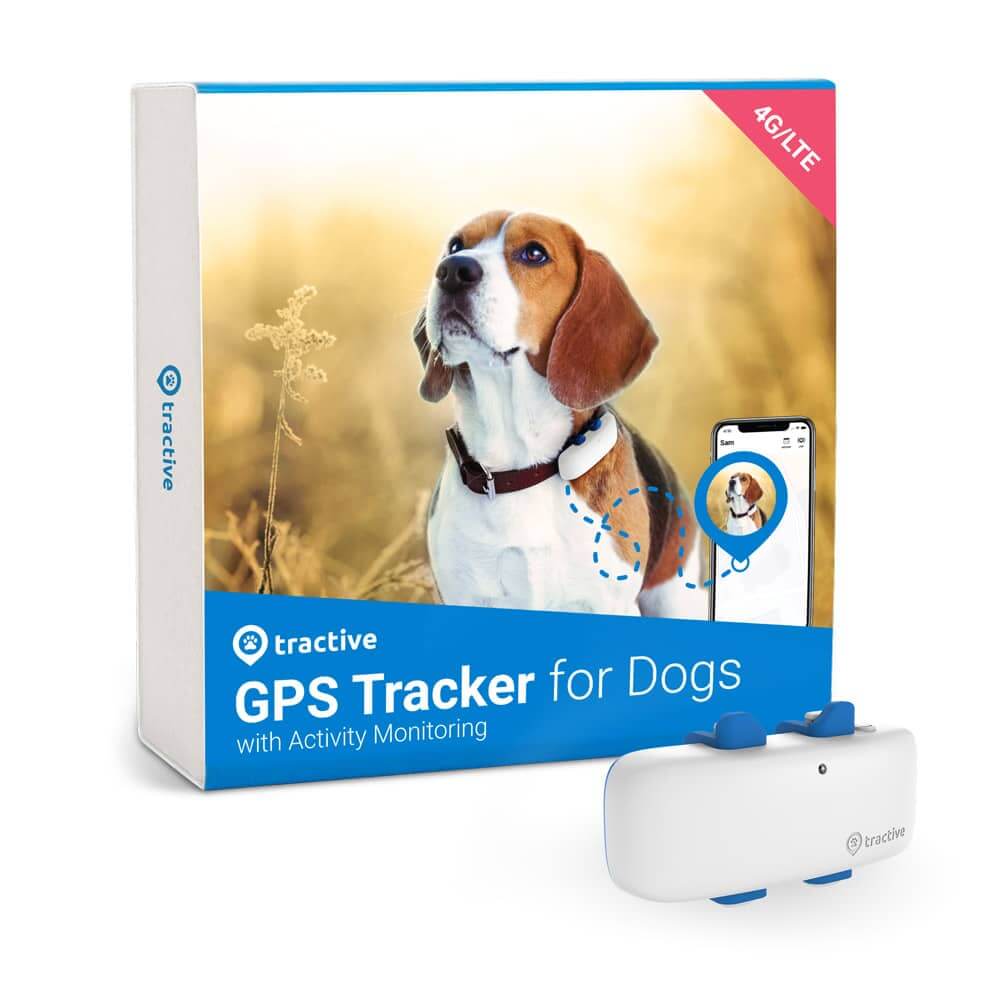
Always know where your dog is
See how they’re doing at a glance with Wellness Score. Know if they’re getting enough exercise. Spot nap patterns. Detect issues early and keep them healthy.
The Tractive dog GPS comes with safety clips that attach securely against your dog’s collar. So no need to implant it into your dog’s skin like a microchip. But where might a vet insert a microchip in your dog?
Where do they put the microchip in dogs?
Usually, the microchip is implanted in between the shoulder blades along the spine of a dog. The placement is important because it should stay put and not move much within the dog’s body.
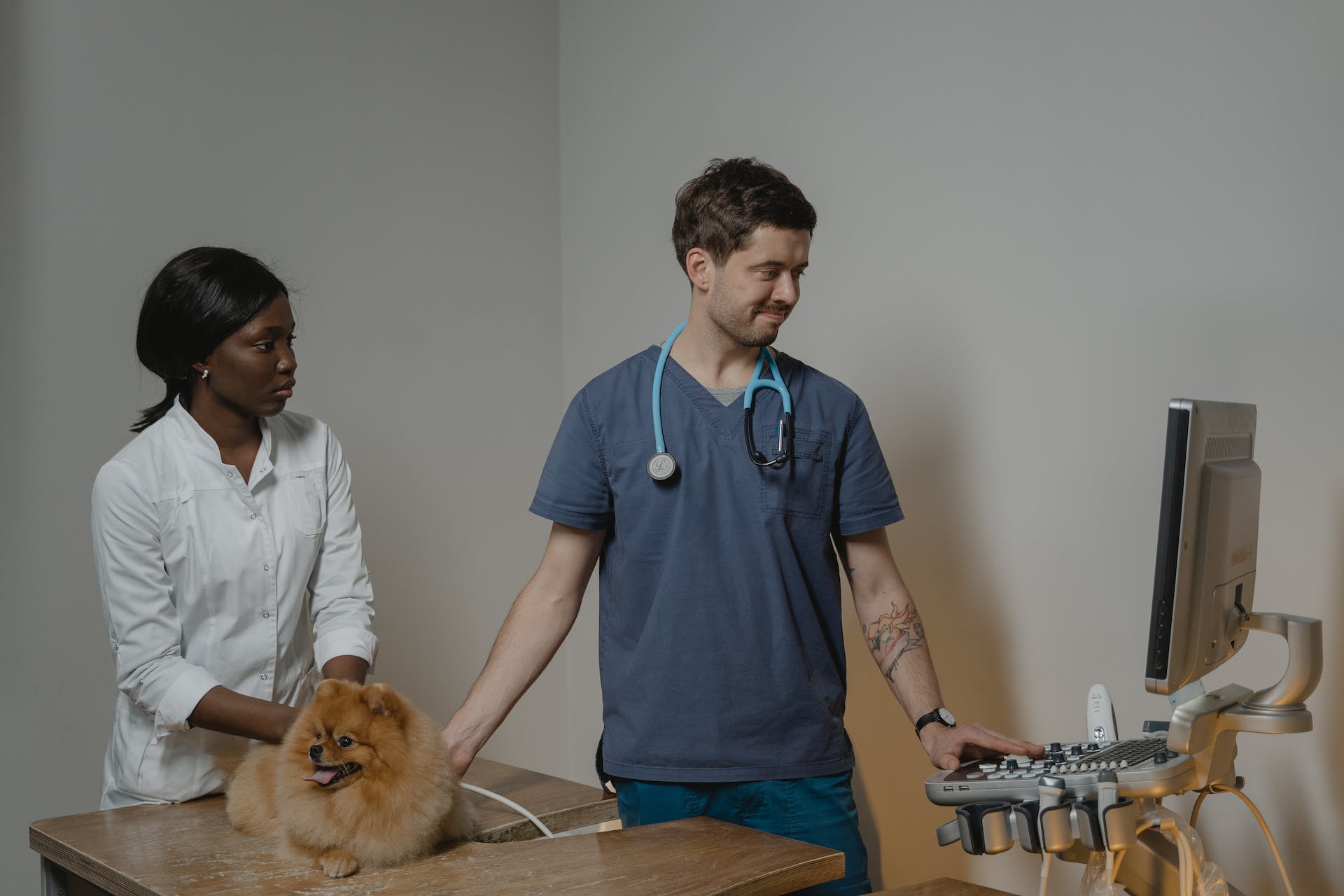
Dog microchipping FAQs: How do vets microchip a dog?
Many dog parents wonder how the procedure of microchipping a dog actually works. The good news is that it is a relatively simple, affordable, and painless procedure. Here are the basic steps involved:
- Verification: Before the sterile microchip is removed from its package, a vet might scan it to verify that the code on the chip is the same as the code on the package label.
- Placement. The microchip is put into a needle, which is then put into a special syringe used for microchipping.
- Positioning.The vet will then position your dog to get them ready for the injection. The microchip is typically inserted between a dog’s shoulder blades, along the spine. Your dog should be standing or lying on their belly.
- Injection. A bit of loose skin is pulled up at the injection site and the needle is quickly inserted. The syringe is squeezed so that the microchip is injected into your dog’s tissue.
- Scanning. Finally, the chip is scanned to ensure it can be read properly.
- Registration. After the microchipping procedure, you need to register your dog as well as your name and contact details in the microchip database. Your vet will provide you with the relevant information as well as inform you of any fees to be paid.
Warning: If you don’t register your dog’s microchip identification information in the database, the process will be rendered useless because the microchip ID will not be associated with you or anyone.
How long does it take to microchip a dog?
The dog microchipping procedure is quick and easy; you’ll likely be all done in 10 minutes or less2!
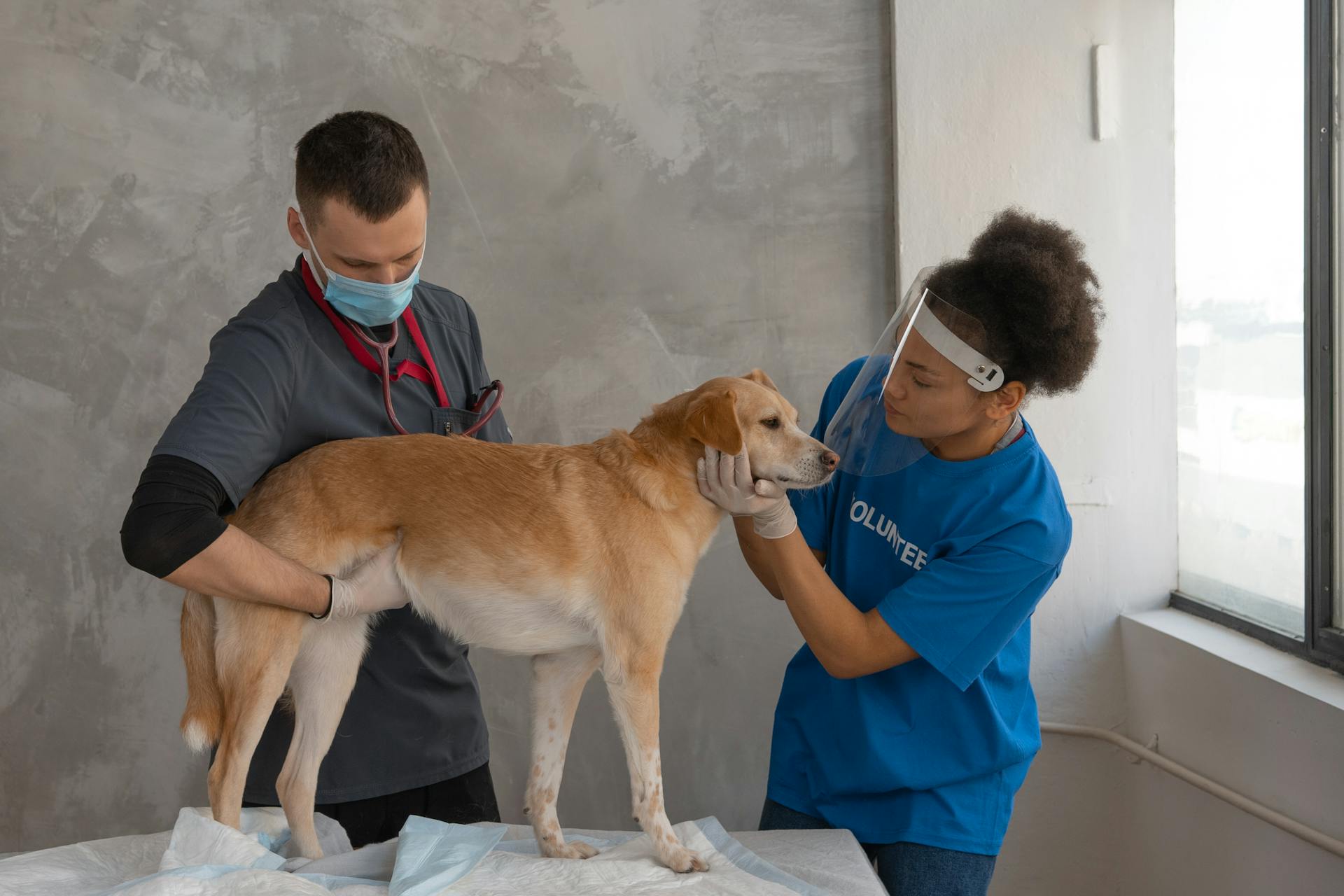
How much does it cost to microchip a dog?
In the U.K., it costs as little as £10 to £15 to have your dog microchipped3 . In the U.S., the average cost is anywhere from $25 – $70, depending on the vet. The fee includes the implantation of the microchip as well as registration in a pet recovery database. Veterinarians are generally the most qualified to microchip your dog, although some groomers, walkers, or dog sitters may also offer this service.
Where can I get my dog microchipped?
The best place to get your dog microchipped is at your preferred veterinarian. However, large pet stores such as PetSmart or Petco also offer microchipping services.
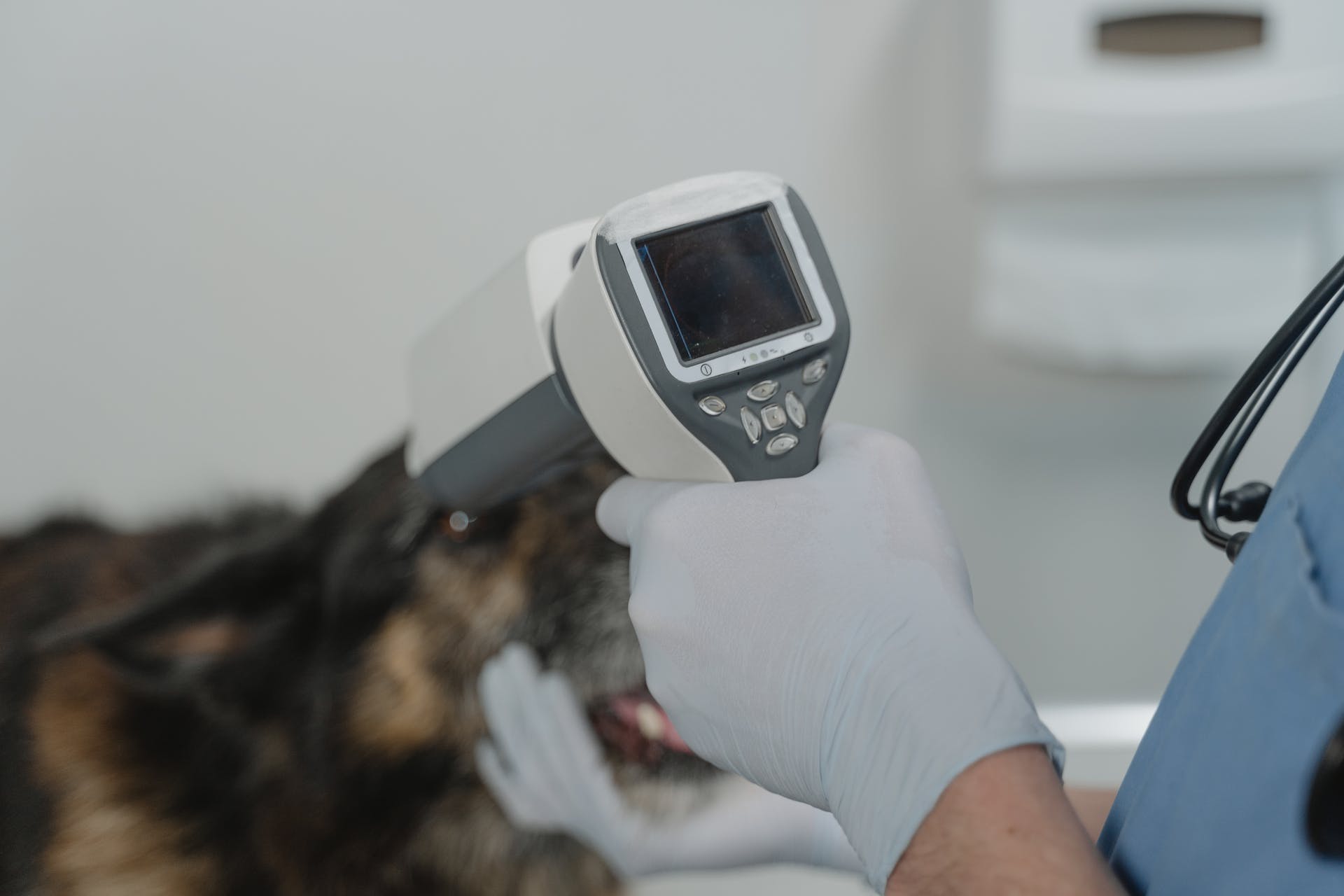
In the U.K., its mandatory to microchip your dog. Therefore the following organizations offer free dog microchipping:
In the US, your local shelter can offer low-cost or even free microchipping services – as well as these locations:
- Some organizations like the American Kennel Club (AKC) offer mobile clinics that travel across a bunch of places and offer affordable microchipping procedures for dogs.
- Other nonprofit organizations like the Michelsen Found Animals Foundation which help you find vet clinics near you where you can get your dog microchipped.
- Check out your community microchipping clinics for dogs. These are also affordable options you could consider.
Where can I get my dog scanned for a microchip?
You can get your dog microchip scanned at your local vet’s office, animal hospitals, animal shelters, most humane societies as well as at some big pet retailers like PetSmart. Call or visit the website of a local businesses in your area to find out if they offer microchip reading services and how much it will cost.
Does microchipping hurt dogs? Is it safe?
Dog microchipping is considered a safe, harmless, and relatively painless procedure so you can microchip your dog without a guilty conscience. The process is comparable to humans getting piercings – a quick jab and then it’s over. Since it’s quick and easy, no pain medication or anesthesia is needed.
Moreover, according to experts at the Johnson Animal Clinic, more than four million pets have been microchipped and only 391 adverse reactions were reported4. Most of which involved a nodule developing under the skin where the microchip had been implanted.
So it is very unlikely that your dog will experience any negative side effects as a result of getting microchipped.
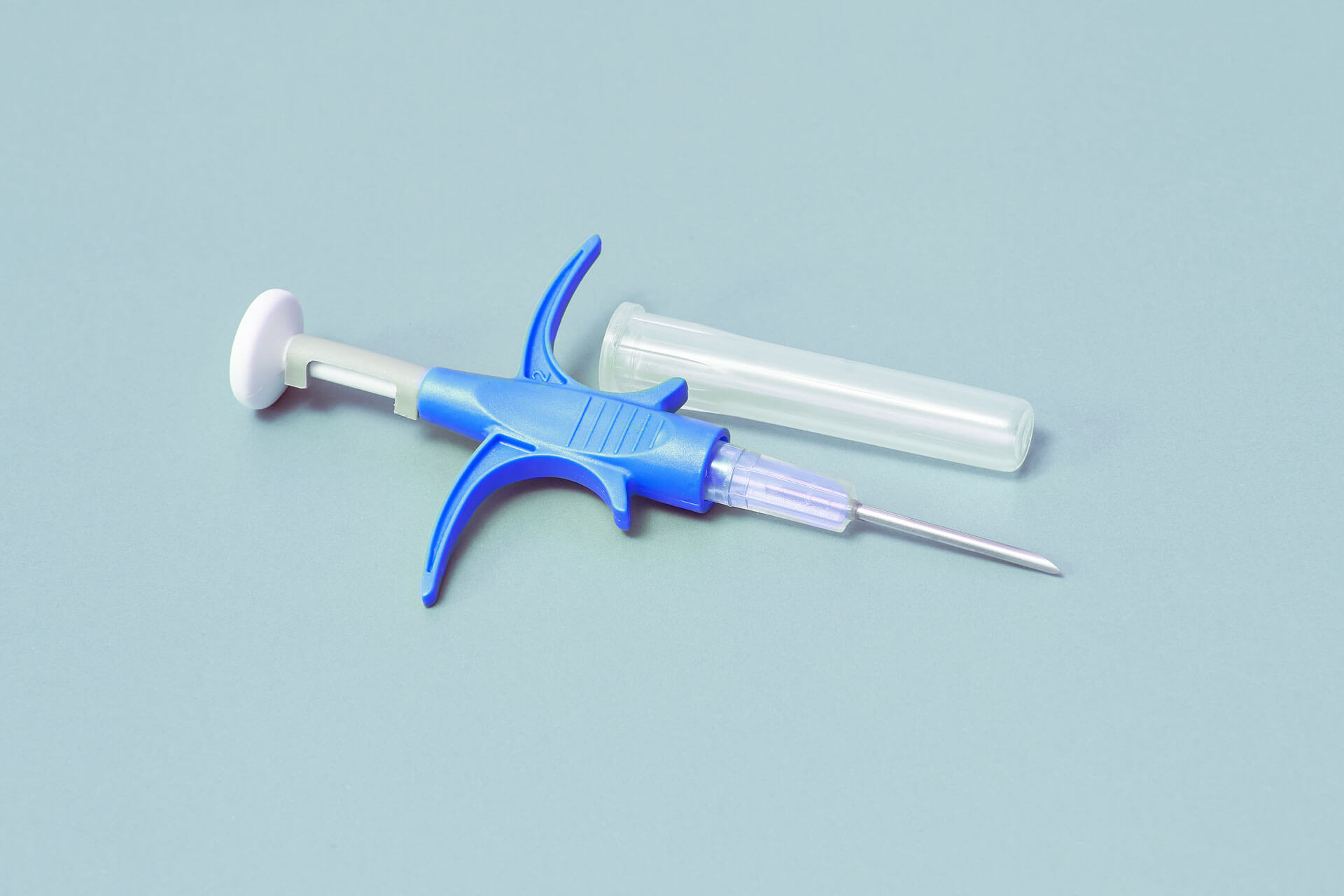
Should I microchip my dog?
In general, yes, you should microchip your dog. Microchipping is an important part of being a responsible dog parent. And more importantly, it might even be legally required in some places – like most European countries, Australia, New Zealand, the United Kingdom, and many US states.5 Including:
- California
- District of Columbia (Washington DC)
- Florida West
- Georgia
- Illinois
- Massachusetts
- New Hampshire
- New Jersey
- New York
- North Carolina
- South Carolina
- Texas
In fact, Hawaii is the first state that’s made it mandatory to microchip your dog as of 2021. Similarly, in the UK, you have to microchip your dog before they are 8 weeks old; otherwise you may be fined upwards of £500.6 Check to see if there are dog microchipping laws in your area.
Again, microchips offer a permanent solution for identifying your dog. Dogs found straying on their own will usually be collected by a dog warden or brought into an animal shelter. There, they will try to scan the dog for a microchip to identify the ‘owner’ aka you.
Your chances of being reunited with your missing dog are much higher than if your dog does not have a microchip (as long as you keep your contact details up to date).

If your dog gets lost and does not have a microchip, it’s much less likely you’ll be reunited with them again. Similarly, if someone who’s found your dog can’t contact you with any other details, it’s even less likely they’ll be able to return your dog to you. Stray dogs without a known guardian may be rehomed – or worse, euthanized.
The use of microchips significantly increases the chance that a lost pet will be returned to its family, reducing euthanasia of unclaimed pets.
– Dr. Gary Michelson, founder of the Michelson Found Animals Foundation7
List of pet microchip companies
Some common pet microchip companies or microchip registries include:
- 24 Pet Watch
- AKC Reunite
- AVID FriendChip
- Banfield
- BuddyID™
- Free Pet Chip Registry (911PetChip)
- Furreka
- Home Again
- InfoPET
- Microfindr / Datamars
- Nanochip ID Inc.
- Peeva
- Petidco (AVIDCanada)
- PetKey
- Pet Link
- RESQ
- Smart Tag
- Save This Life
If you only have the microchip ID number, you can use petmicrochiplookup.org to find out which organization your dog microchip is registered with.
Can a microchip be removed from a dog?
While microchips for dogs are generally considered permanent, they can be removed in rare circumstances. This would require a surgical procedure and possibly anesthesia. Some people fear that their dog could get cancer and therefore they want to remove the microchip.
Major institutions like the American Veterinary Medical Association advise against removing a dog’s microchip7. Not only because it is a complicated procedure, but according to studies, it is extremely unlikely that a dog will get cancer from a microchip. Additionally, the benefits of a dog microchip far outweigh the possible disadvantages.
⚠️ If your dog is kidnapped, dog thieves might injure them by attempting to remove their microchip or any traces of identification from them. Which is why we’d always recommend combining any microchip with a GPS tracker that can help you track your dog in real-time. And keep your dog safe from attack or injury.
Protect my dog with Tractive GPS
Can I track my dog with a microchip?
A common misconception is that once you get your dog microchipped, you will be able to track them using GPS. This is false: microchips only help you identify your dog; not track them. Microchips are the size of a grain of rice, so they’re not big enough to hold the technology that is required for a GPS tracking device.
So while a microchip will help identify your dog if they are lost and found again, the only thing that can help you track and follow your dog in real-time is a GPS dog tracker like the Tractive GPS.

Here’s a quick distinction between microchips and GPS trackers – so you can tell the difference and why it matters:
| Details | Microchips | Tractive GPS Tracker |
|---|---|---|
| Purpose | Identifying your lost dog at a vet or local shelter | Tracking down your lost dog in real-time |
| Size | 12 x 2 mm | 72 x 29 x 16 mm |
| Weight | 0,025 g | 35 g |
| Implantable | ||
| Waterproof | ||
| Battery life | No battery included | Up to 7 days |
| Upfront cost | ~85 € | 49,99 € |
| Ongoing costs | None | Monthly subscription plans |
| Location tracking | ||
| Are you going to have to rely on strangers? | Yes | No |
| Real-time location updates | ||
| Legal requirement | Required in most countries & US states | No |
| Area of operation | Worldwide | Worldwide in over 150 countries |
| Runaway alert | ||
| Activity tracking | ||
| Sleep tracking | ||
| Health alerts | ||
| Light & Sound tracking |
Can’t we just implant GPS trackers into dogs?
Firstly, a GPS implant for dogs doesn’t exist. Secondly, it would be a painful, even dangerous procedure for dogs to go through.
Why? Because most GPS trackers are similar to a smartwatch or a phone. (With all the hardware bits and bobs.) Now imagine sticking that under a dog’s skin? Not only would it be painful, the risk of battery leakage might severely damage your dog’s internal organs. Besides, you wouldn’t be able to charge it.

“A battery pack is built from very poisonous chemicals. A little puncture can lead to a leakage, fire or explosion. That’s why implanting a battery pack under the skin of your dog or cat can be very dangerous. So we wouldn’t recommend it.”
– Ivelin Nenkov, Embedded Systems Engineer at Tractive since 2016
So, instead, we’ve built our Tractive GPS for max comfort – it’s lightweight, comfortable to wear, and your dog won’t even notice it. Take it from our very own pet parents who have complete peace of mind knowing that they’ll never have to lose their dog ever again.



Want max safety for your dog? Get a microchip + GPS tracker
Dog microchips are a permanent ID solution and essential tool recommended by most vets and shelters. A vet can quickly and safely implant one into your dog’s skin. But remember: microchips only help someone identify your dog. If you want to actively track and find your missing buddy yourself, you’re best off with a GPS tracker that lets you track them in real-time. (Because microchips don’t use GPS and can’t help you actually track down your dog.)
Microchip implantation is a 10-minute process – relatively painless and mostly affordable. It might also be legally required when traveling to different countries, so make sure to check the local laws where you are.
By microchipping your dog and keeping your contact information in the microchip database up to date, you can increase the chances that you will be reunited with your furry friend should they ever get lost. And with a GPS tracker, you can take an active role in finding them, safe and sound.
For more information from a vet and to see what the process really looks like, check out the video below from our friends at Heron Lakes Animal Hospital:
Did you like this post? Share it with a friend or sign up for the Tractive newsletter to receive more pawsome information like this to your inbox!




